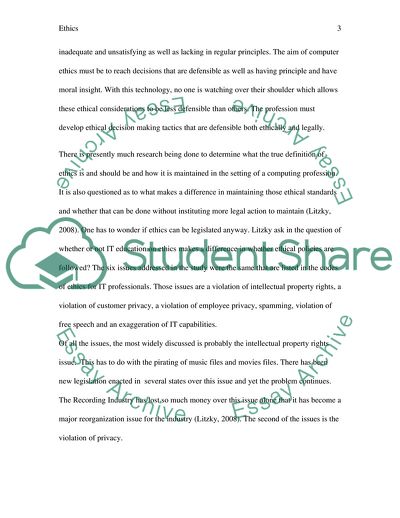Cite this document
(Ethics and IT Essay Example | Topics and Well Written Essays - 2000 words, n.d.)
Ethics and IT Essay Example | Topics and Well Written Essays - 2000 words. Retrieved from https://studentshare.org/information-technology/1737889-ethics-and-regulations
Ethics and IT Essay Example | Topics and Well Written Essays - 2000 words. Retrieved from https://studentshare.org/information-technology/1737889-ethics-and-regulations
(Ethics and IT Essay Example | Topics and Well Written Essays - 2000 Words)
Ethics and IT Essay Example | Topics and Well Written Essays - 2000 Words. https://studentshare.org/information-technology/1737889-ethics-and-regulations.
Ethics and IT Essay Example | Topics and Well Written Essays - 2000 Words. https://studentshare.org/information-technology/1737889-ethics-and-regulations.
“Ethics and IT Essay Example | Topics and Well Written Essays - 2000 Words”. https://studentshare.org/information-technology/1737889-ethics-and-regulations.


